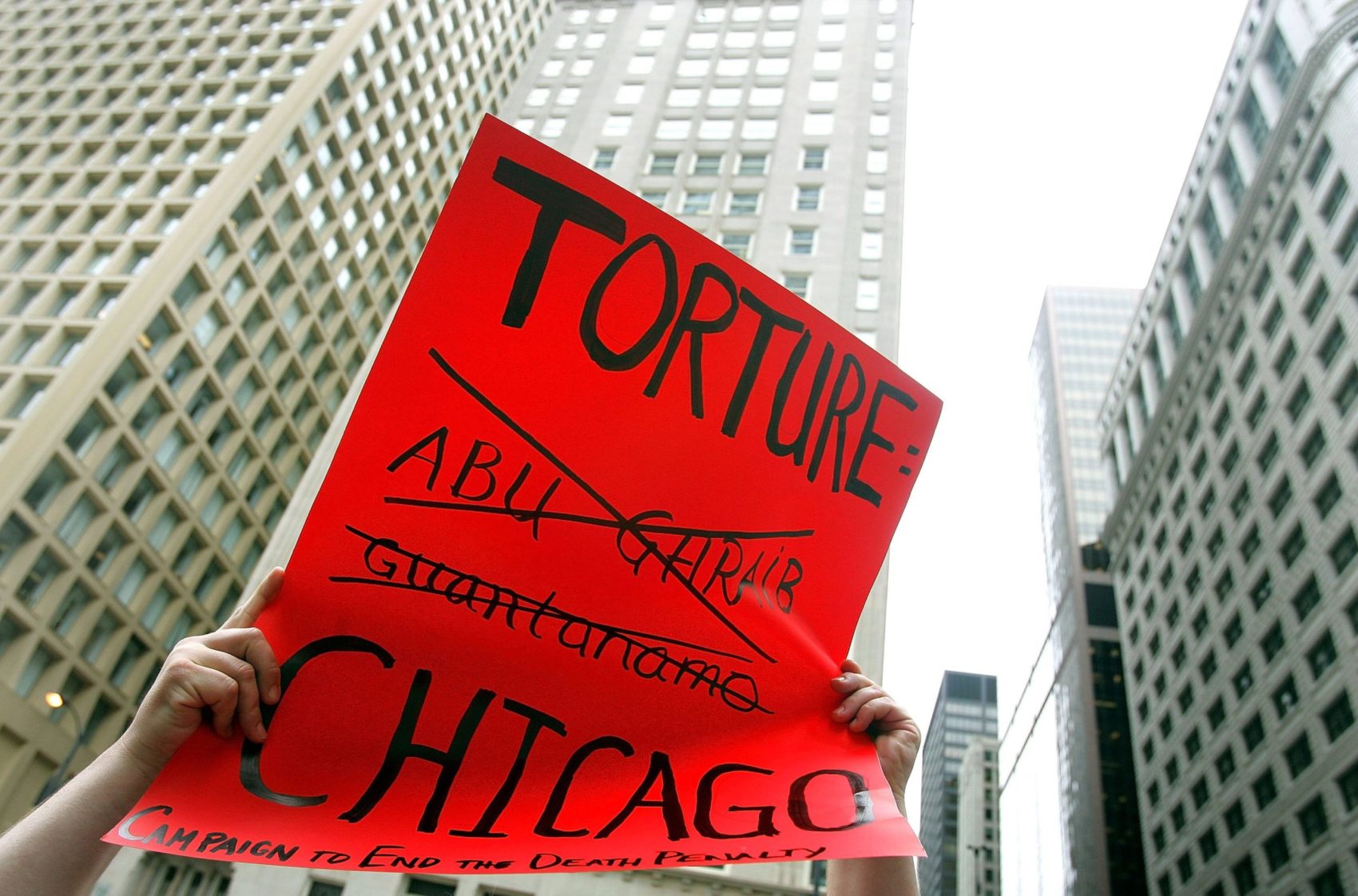Uprooting U.S. Torture, Abroad And At Home
Testimony by an architect of the CIA torture program is a reminder of the problem of torture—and health professionals’ complicity—by domestic law enforcement

Spotlights like this one provide original commentary and analysis on pressing criminal justice issues of the day. You can read them each day in our newsletter, The Daily Appeal.
Yesterday, in the U.S. military courtroom in Guantánamo Bay, Cuba, one of the psychologists responsible for designing and carrying out the torture inflicted in CIA “black sites” around the world after the Sept. 11 attacks testified about his role in the torture program, reported the New York Times. James Mitchell was called by the defense at a pretrial hearing in the case against five men charged with helping to plan the attacks.
The defendants included Khalid Sheikh Mohammed, who “was waterboarded 183 times in March 2003 by a team including Dr. Mitchell.” Mohammed and the four other men were in the courtroom while Mitchell testified.
Mitchell and another psychologist, Bruce Jessen, designed what the government described as an “enhanced interrogation” system. The business they went on to establish supplied guards and interrogators to work at the secret prisons established by the CIA around the world after the 2001 attacks. They received $81 million for the contract.
Mitchell described his work on the torture program and his participation in the first known waterboarding, that of Abu Zubaydah in 2002. Zubaydah was the “first known CIA prisoner subjected to the full range of interrogation techniques, which also included sleep deprivation and being crammed inside a coffin-size box and slammed into a wall.” Mitchell defended his work, saying he would “get up today and do it again,” reported the Times.
In 2015, 13 years later, the largest association of psychologists in the United States voted “to begin reversing its policy of collusion in torture … by prohibiting members of the American Psychological Association from participating in the interrogation of U.S. prisoners on foreign soil,” reported The Guardian. The association’s council of representative’s vote was nearly unanimous, but it took years of fierce advocacy by APA members and human rights activists to get to that point. And it came “in the wake of a devastating internal report that undermined more than a decade of denial from medical professionals of their complicity in post-9/11 interrogations.”
Steven Reisner, one of the members of the council and a leader in the fight for the ban, told The Guardian: “This is an extraordinary victory because these prohibitions are clear, they’re implementable, and people will be held accountable.” The vote, he said will turn the APA “from leading us into the dark side to leading us out of the dark side.”
After the vote, legal commentators analyzed the APA’s prohibition. One of them, Marty Lederman of Georgetown University Law Center and co-founder of the online forum Just Security, noted that “for some reason, the new APA prohibition—unlike its counterparts for doctors and psychiatrists—expressly does not apply to ‘domestic law enforcement interrogations or domestic detention settings.’”
Reisner told The Guardian that reformers would hope to eliminate that carve-out in the future, saying they hoped to prevent psychologists from abetting “domestic cruelty” in the U.S. justice system. “We have to consider that in the future,” he said.
The spotlight on the torture carried out worldwide in the name of protecting Americans at home is still cause for reflection on the torture carried out by domestic law enforcement and the relationship between the two.
In February 2015, The Guardian reported on the abuses inflicted at Homan Square, “the domestic equivalent of a CIA black site” in Chicago. Writing in Reason shortly after, Noah Berlatsky looked at the interplay between the horrors of domestic law enforcement and the torture condoned under the war on terror. Black sites and torture were not new in police work, the organizer and educator Mariame Kaba told Berlatsky, and to describe them so, she said, “erases the histories of torture against many, many people.” The problem, Berlatsky wrote, “is not that the war on terror is bleeding into domestic policing, but rather that the war on terror and domestic policing are part of a single, vicious whole, in which tactics and ideologies are shared between military, police, and the public, allowing for state torture and violence both at home and overseas.”
In December, in an explainer for The Appeal, Kelly Hayes looked at Chicago police torture, the “heinous acts of violence and psychological abuse … perpetrated against over 100 Black men and women under the supervision of then-commander Jon Burge,” and Chicago’s reparations ordinance, the first of its kind in the country. In June, the Daily Appeal looked at the ordinance and the need for city funding for a public memorial for the victims of police torture.
The complicity of health professionals in the abuse, even torture, of detained people domestically continues to attract attention. Homer Venters, a former chief medical officer of New York City jails, has spoken out about the participation of jail medical staff in harming incarcerated people in his book “Life and Death in Rikers Island” and in interviews after its publication. Writing about Venters’s work last year, Jennifer Gonnerman looked at how he has specifically described the harms of solitary confinement, a practice that his research found put people at a substantially higher risk of suicide than the general population in jail, and the process of medical staff clearing people for placement in solitary. “Health clearance for solitary is not based on any reliable science and violates basic medical ethics because, of course, that patient is supposed to suffer,” Venters wrote.
